IB Visual Arts Exhibition: More than what you see
Posted on 11th Apr 2018 in Switzerland, Diploma Programme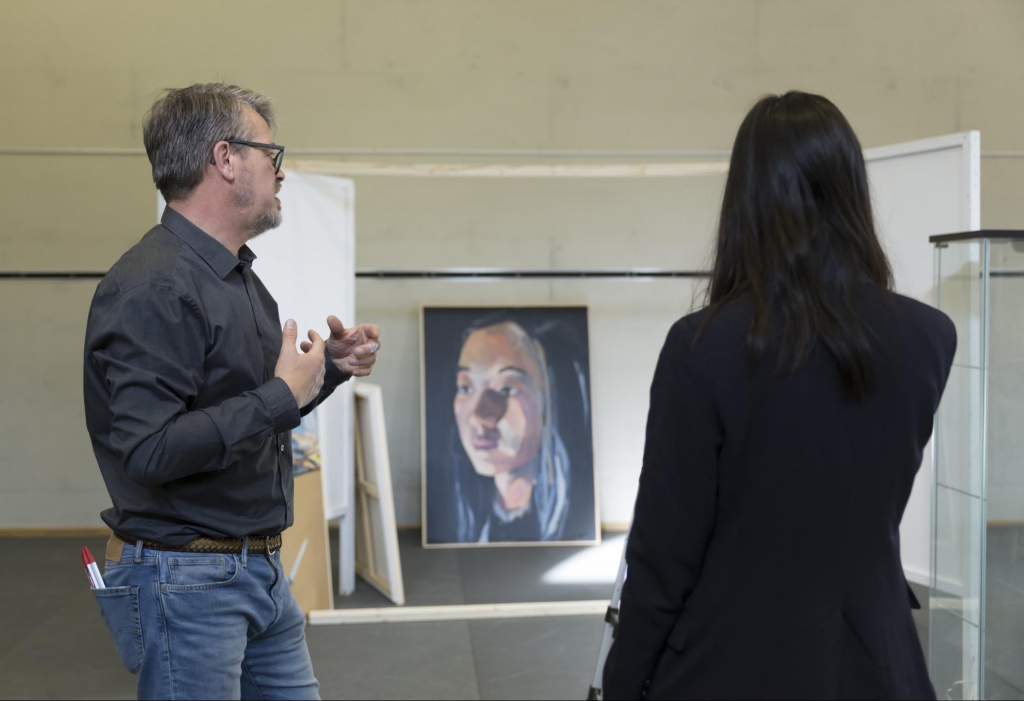
IB Visual Arts student Shu Ye ’18 discusses the incredible amount of work that goes on behind the scenes as talented student artists and dedicated teachers come together to create a stunning arts exhibition.
Every year at the beginning of March, TASIS students, teachers, and parents may notice artworks spread out around campus. If they go to the Palestrina, they will even simulate the experience of visiting a museum. These pieces of arts are all created by TASIS IB Visual Arts students. Following the requirements of the IB, these students must select some of their best artworks and arrange them into an exhibition. This final exhibition, in which students must also defend and articulate their purpose and intention in a written rationale, is the culmination of each student artist’s IB Visual Arts (IBVA) experience and accounts for 40 percent of the final grade.
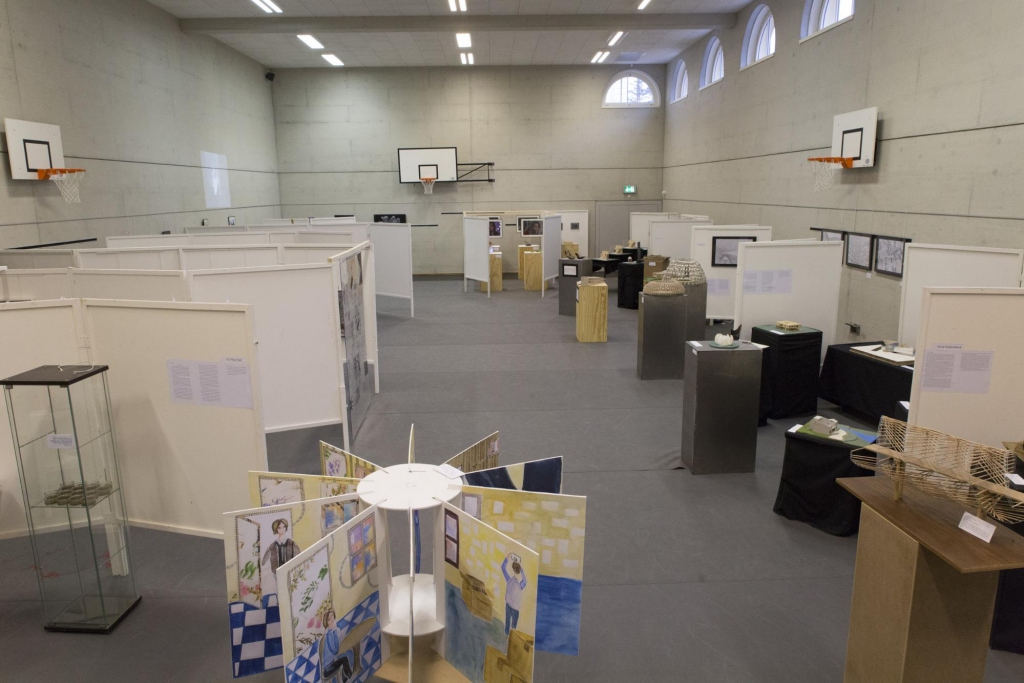 The Palestrina is transformed into an art gallery
The Palestrina is transformed into an art gallery
Drawing and Painting, Photography, and Architecture & Design are the three most important media that TASIS IBVA students focus on. Some students may develop their skills in one particular field, but others might provide the viewers a combination of several media, connecting 2-dimensions to 3-dimensions. IB Higher Level (HL) students need to exhibit 8-11 artworks while Standard Level (SL) students need 5-7 artworks. The exhibition has to be well-designed with a theme that can connect ideas and inspirations behind all the works.
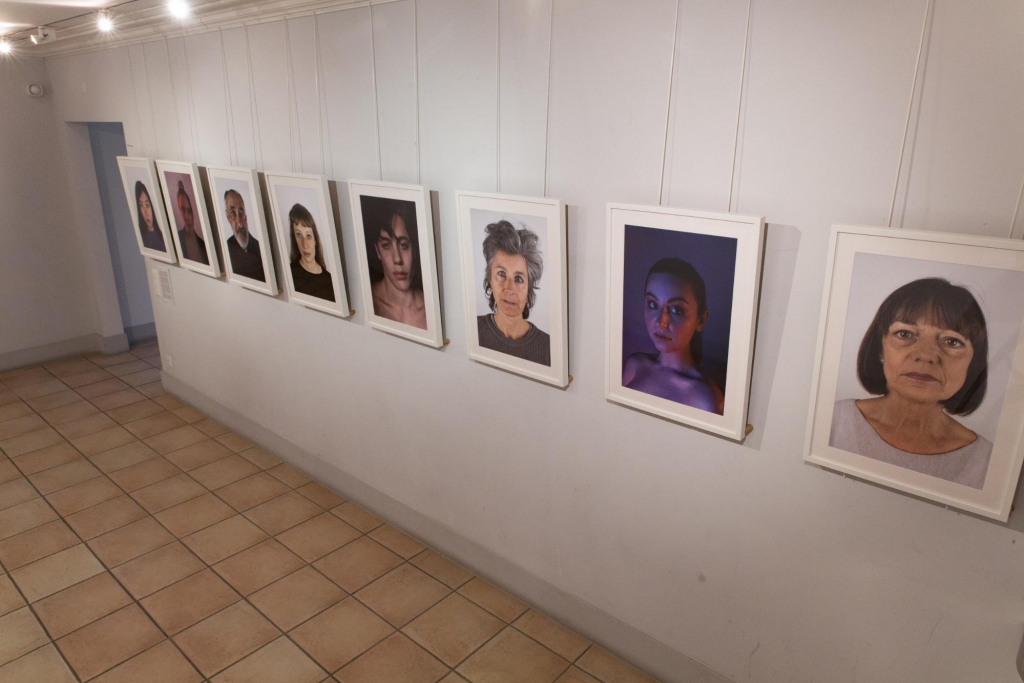 An exhibition curated by Frida Larsson ’18
An exhibition curated by Frida Larsson ’18
This year, at 16:00 on Friday, March 9, the doors of the Palestrina opened and welcomed many visitors to come and see this exhibition of original student work. People were clearly surprised and amazed by the artworks that were displayed, and IBVA students confidently stood beside their exhibiting space and helped introduce and explain their themes. It was a great visual pleasure to all the visitors. However, they might not know that most of the IBVA students were there for the whole day from 8:00 in the morning. Some of them were busy running up and down getting their artworks and equipment for the exhibition while others were in the Palestrina for eight hours thinking about how to arrange their artworks in a way that would make them look unified but dynamic. The visitors could never imagine how the Palestrina changed from a mess to the “art gallery” they were in.
For all IBVA students, this exhibition was the final presentation and conclusion of the efforts they put in for years. They have struggled with finding ideas for their creative works, and they have also enjoyed the happiness of successfully finishing their works. The exhibition was more than the visual pleasure it provided to the audience—it was the culmination of the students’ countless studio hours and long-standing passion for the arts.
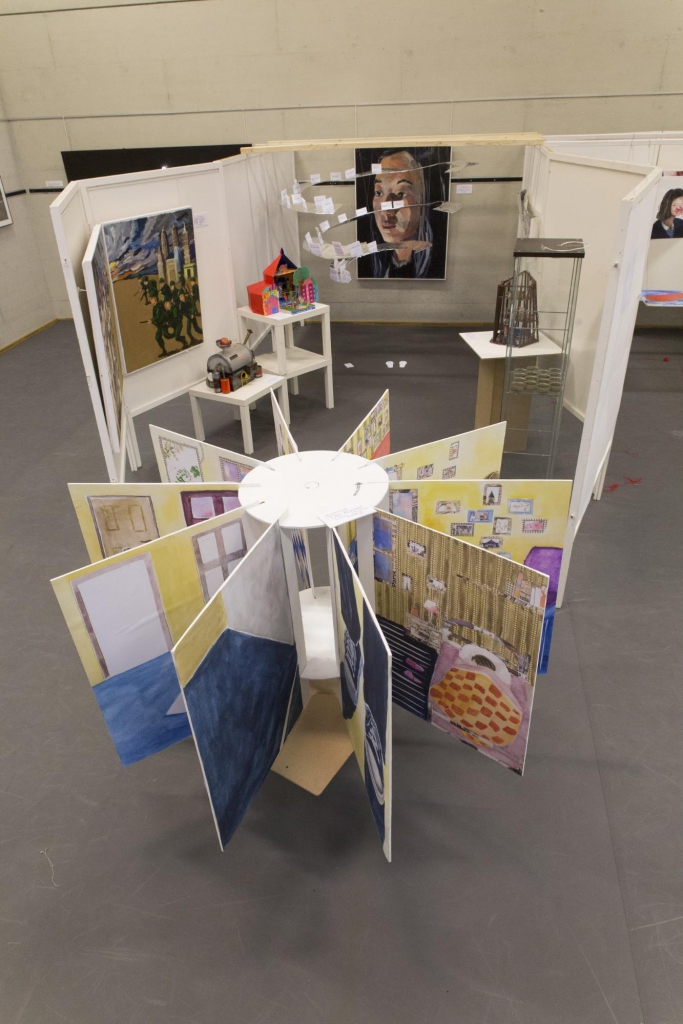 Yu Ying Chan’s exhibit
Yu Ying Chan’s exhibit
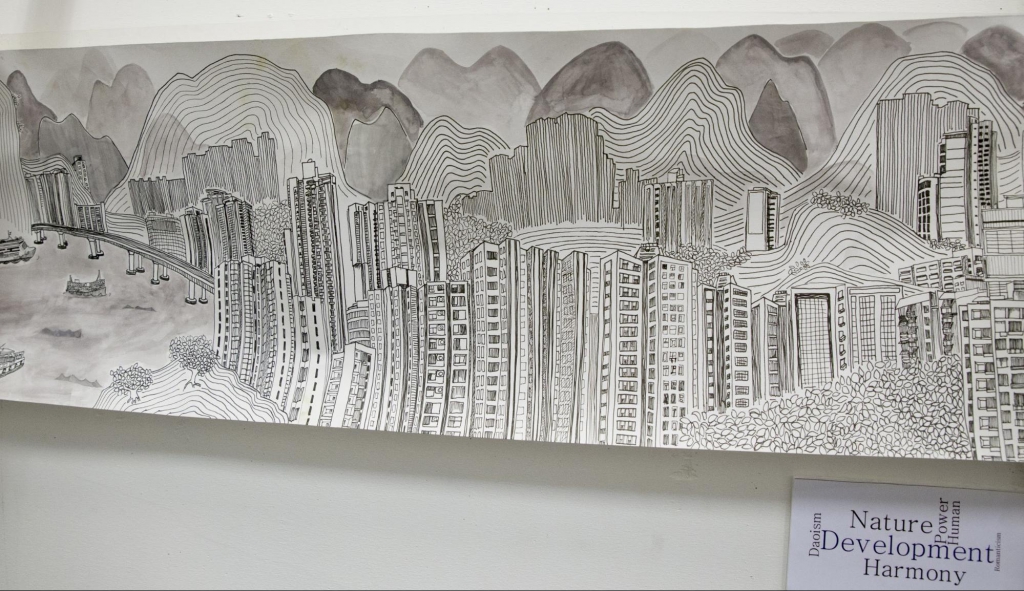 A closer look at one of Ying’s pieces
A closer look at one of Ying’s pieces
Yu Ying Chan ’18, an IBVA Drawing and Painting HL student, thinks her exhibition turned out better than she expected, and she was very satisfied with it. Her exhibition was about the cycle of life and the relation of future and past. There were still difficulties, however, when she needed to hang her spiral during the day the exhibition was prepared. It was also hard to find the best composition of her works since combining paintings with 3-dimensional models needed special care with the space she was provided. She had been thinking about the best way to organize her exhibition for the previous two and a half months, and she has been involved in the TASIS Visual Arts program for three years, so she has been continuously drawing and painting nearly every day for a thousand days. She included eight projects in her exhibition, and on average she spent more than 10 hours per week working on them. Besides creating artworks in class, Ying also worked hard after school. She spent around four hours outside of class in the art studios each week.
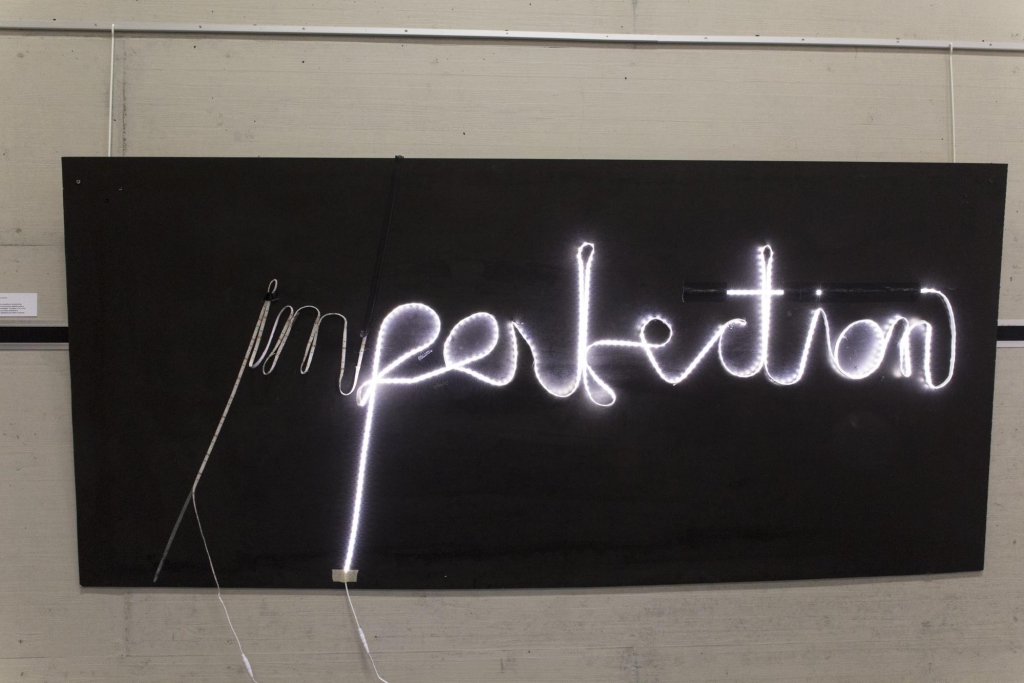 A piece created by Bryan Soh
A piece created by Bryan Soh
Bryan Soh ’18 is one of the many talented students in Photography HL. He thinks his exhibition turned out very well in regard to how he wanted it to be curated and how it addressed the issue he wanted to tackle. His exhibition “explores the nature of art through the common use of text, with the purpose being in manifesting the conceptual narrative of an artwork in its formal qualities, as well as exploring the mechanics of text (such as wordplay, color, font, size and visual rhythm) and its unique aesthetic.” His exhibition was so conceptual that he found difficulties manifesting his ideology through artistic means. He abandoned the traditional way of art creation (painting, drawing, or shooting photos), so it took a lot of effort to make his exhibition compelling. With his goal of designing each artwork as unique, it was difficult in the curation process to ensure that the physical positioning of the artworks reinforced the concept of his exhibition, and a lot of improvisation was needed. Bryan started thinking about his exhibition early in October 2017. Like Ying, he has worked hard at his craft in class for three years. He settled on eight works for his exhibition, but there were many more photos and artworks that he created for practice. He enjoyed the entire artistic process.
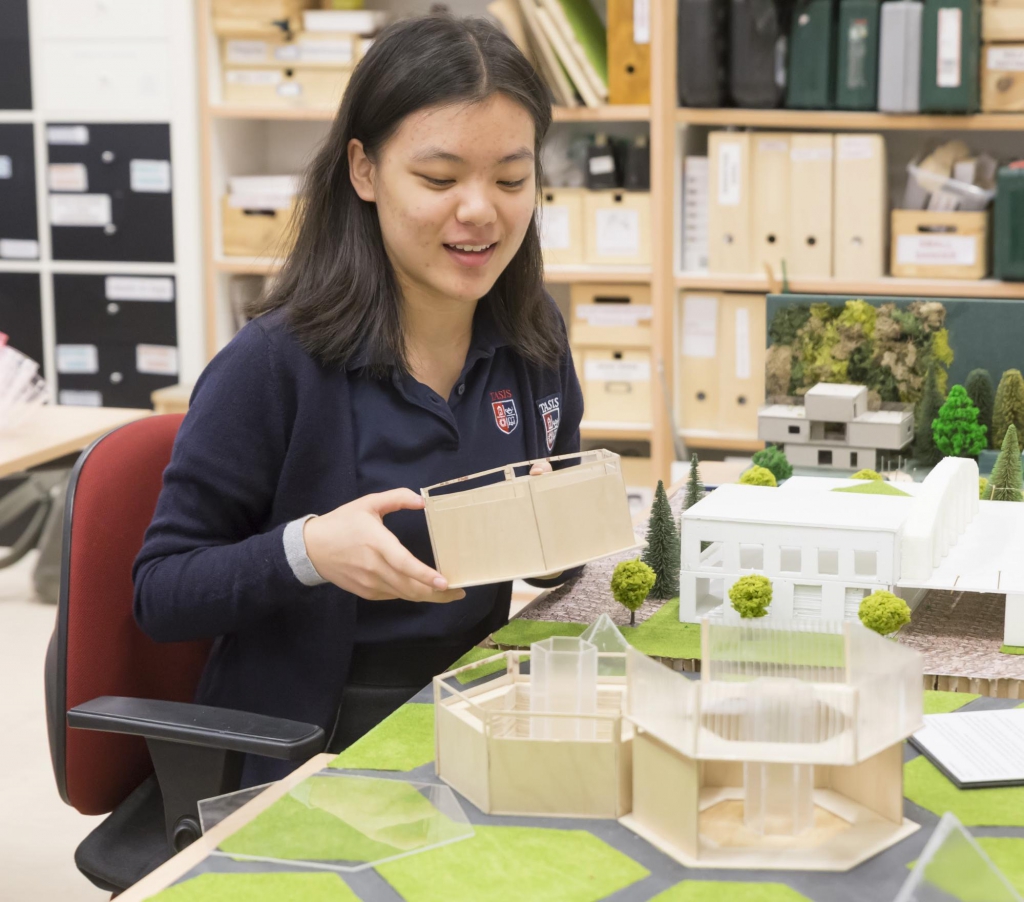 Shu Ye works on her models in the Architecture & Design Studio
Shu Ye works on her models in the Architecture & Design Studio
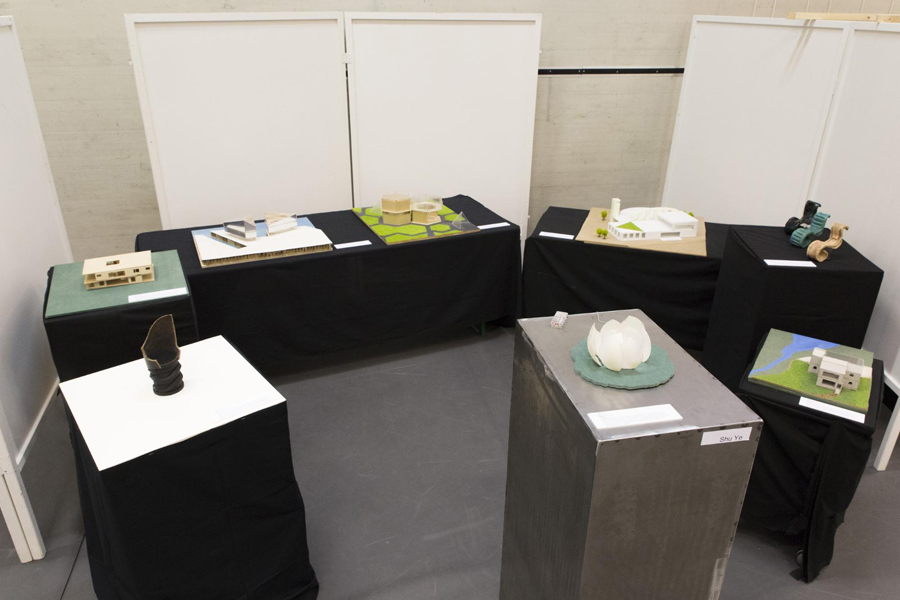 Shu’s exhibit
Shu’s exhibit
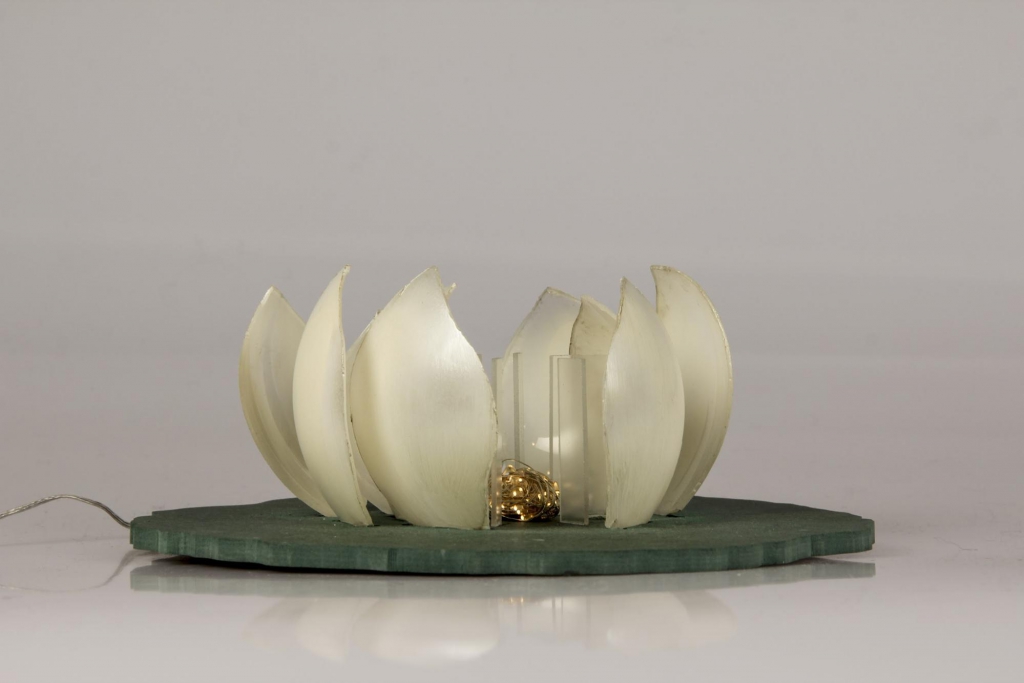 A closer look at one of Shu’s models
A closer look at one of Shu’s models
Besides observing the event, as an Architecture HL student, I also curated my own exhibition. My exhibition went through more improvised moments and ended up being pretty different than my expectations. I explored the use of shape in architecture, sculpture, and furniture designs, and I wanted to present the various changes of the shapes of the models and the unlimited imagination to the viewers. However, I faced many difficulties when creating the exhibition. Since all my exhibition projects were 3-dimensional models, it was really hard to arrange them into a perfect position that could make the works harmonize with each other. Things like the amplitude of the table and the space in between were all difficult to negotiate. I spent the entire day moving the models around to see which arrangement looked best. I have also been involved in architecture for three years, and I never stop making models. I did eight projects in these three years. Even though it does not sound like a huge number, making a model usually takes longer than making a painting. I spend about an hour working on my designs outside of class every week.
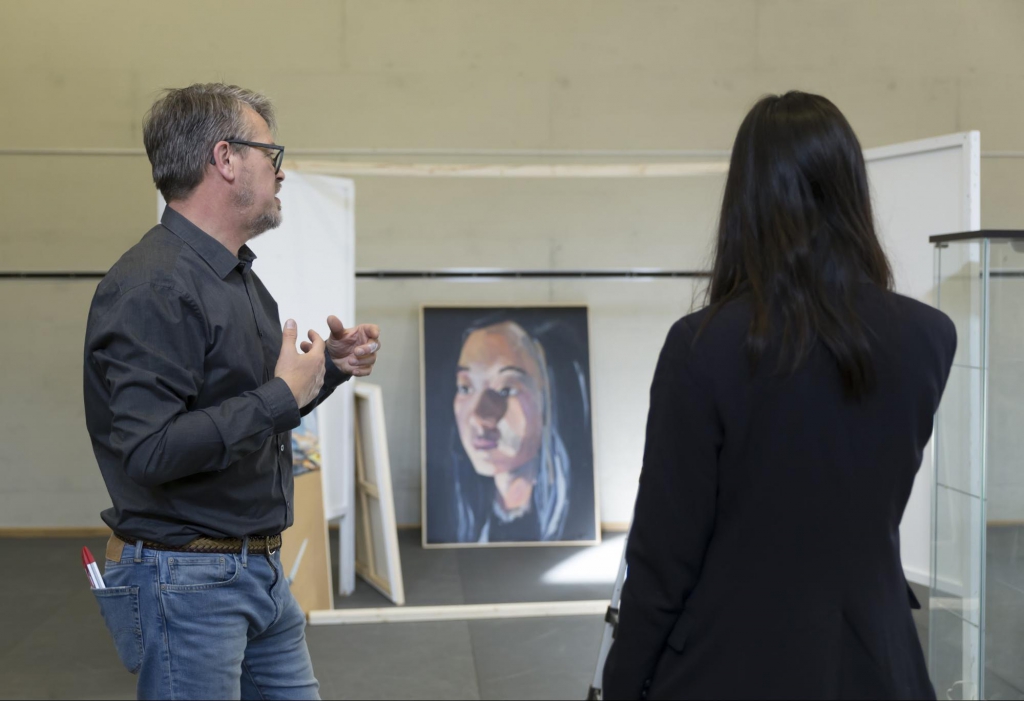 Mr. Martyn Dukes in the early stages of setting up the exhibition
Mr. Martyn Dukes in the early stages of setting up the exhibition
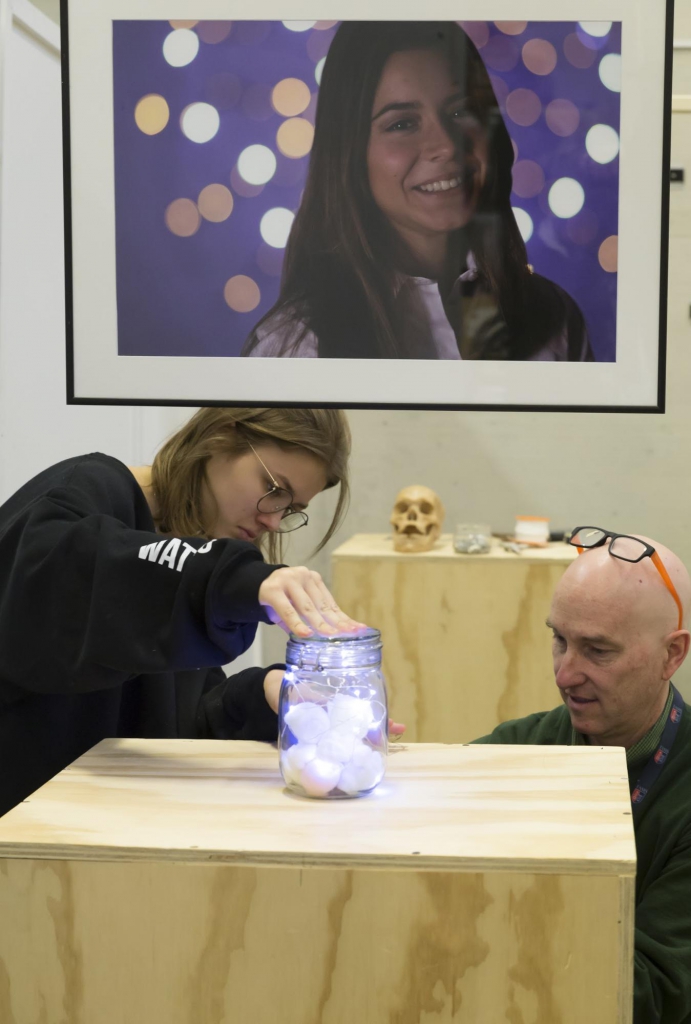 Mr. Frank Long helps Angelina Not ’18 get ready
Mr. Frank Long helps Angelina Not ’18 get ready
The visitors probably can see the hard work of students through their amazing artworks, but the exhibition was not only created by students. Led by Fine Arts Department Chair (and professional artist) Mr. Martyn Dukes, the excellent TASIS Visual Arts teachers led us through the two-year IB classes and helped us curate our exhibitions. Mr. Frank Long, the photography teacher, commented on this year’s exhibition: “This year's IBVA Exhibition demonstrated the wide variety of skills and ideas that come from the TASIS IB Visual Arts students. There were issue-based works and more traditional artworks along with a large body of architectural designs and models.” To Mr. Long, organizing a show of this size is always complicated, and the primary difficulty was having all the students ready to put up their work on top of all the other school work for which they are responsible. With all 17 IBVA students meeting for an hour each day of the week leading up to the exhibition, Mr. Long provided assistance to students who came to him and needed help for particular artworks.
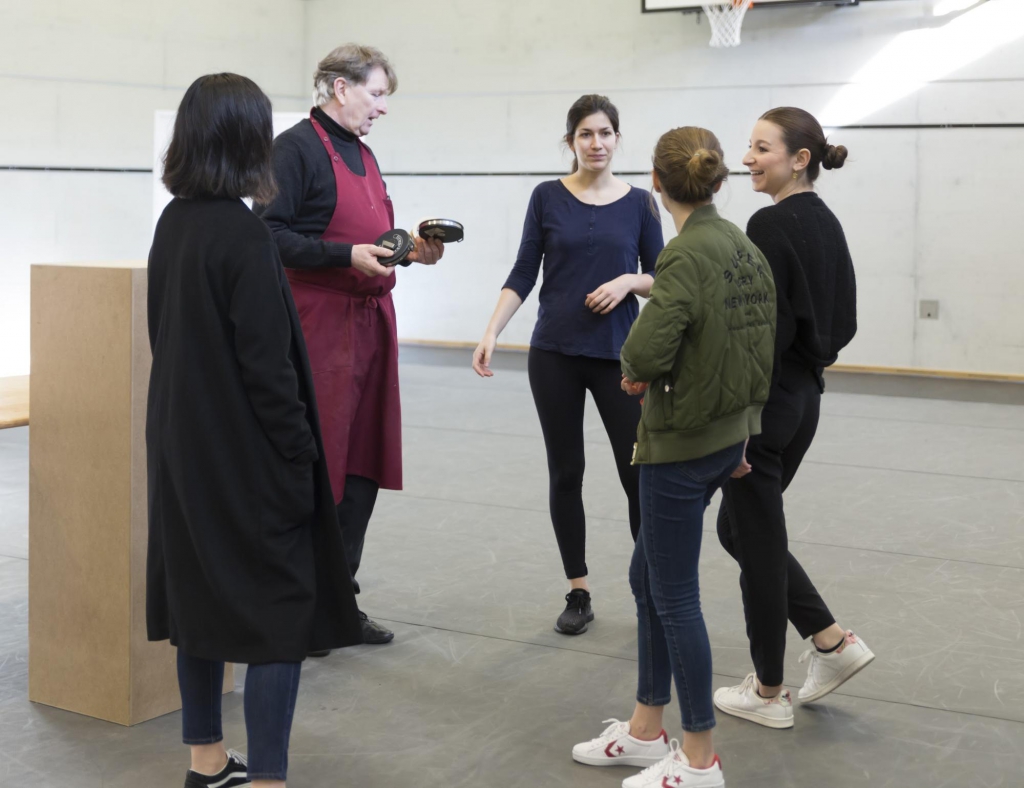 Mr. Mark Aeschliman with Architecture & Design students
Mr. Mark Aeschliman with Architecture & Design students
The Architecture & Design teacher, Mr. Mark Aeschliman, said, “This year's IB Visual Arts Exhibition was among the best in years for my six Architecture & Design students. Their models, drawings, and paintings were carefully crafted, selected, defended in writing, and exhibited with care. I especially appreciated everyone helping with the Palestrina setup, which is always stressful. The quality of the work was very high this year.” Mr. Aeschliman and all the other art teachers helped students deliver their artwork to the Palestrina, mount models on pedestals, hang framed and unframed work, attach lights and labels, and then, a mere 62 hours later, take it all down and store it in the Şahenk Fine Arts Center. It was very difficult for the teachers, especially when they needed to help 17 students at the same time over an eight-hour period on Friday and then spend an entire Saturday morning assessing each student’s exhibition. Mr. Aeschliman also helped a lot with his students’ studio work both in and out of class. In addition to making frequent shopping trips for model-making materials, he assisted students on many Wednesday and Saturday afternoons by helping cut and shape their models with power tools.
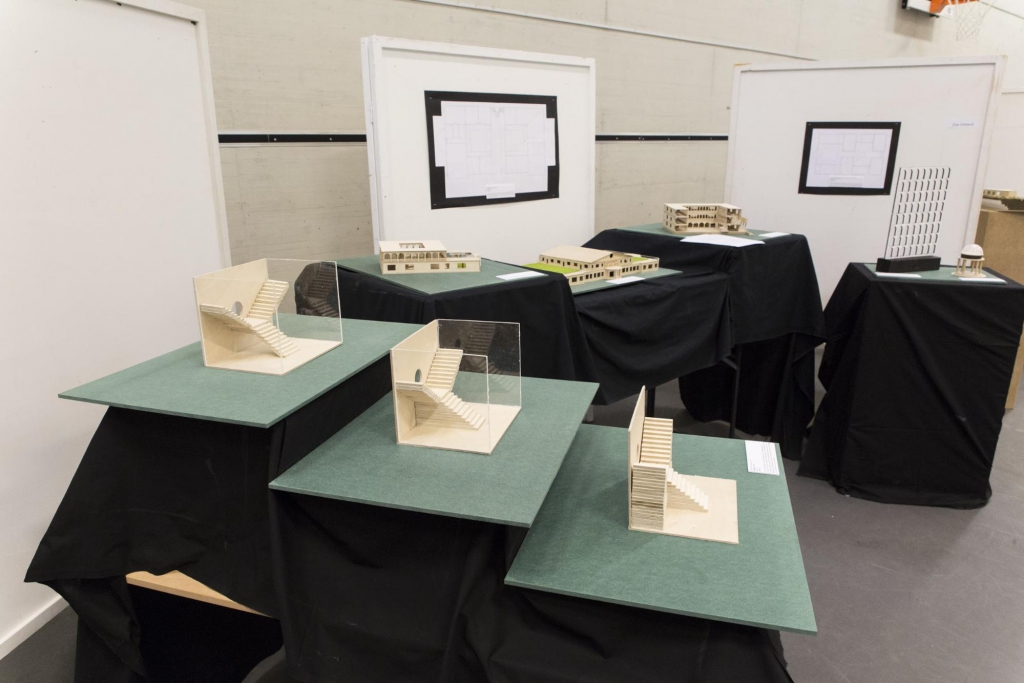 Models created by Zoe Ghilardi ’18
Models created by Zoe Ghilardi ’18
The exhibition may have only lasted for three days, but there were countless hours of work and collaboration from the students and teachers behind it. The successful exhibition demonstrated how gifted and talented TASIS Visual Arts students are, showed how dedicated and passionate their teachers are, and transferred the beauty of the arts to the TASIS community.
See more images from the 2018 IB Visual Arts Exhibition.